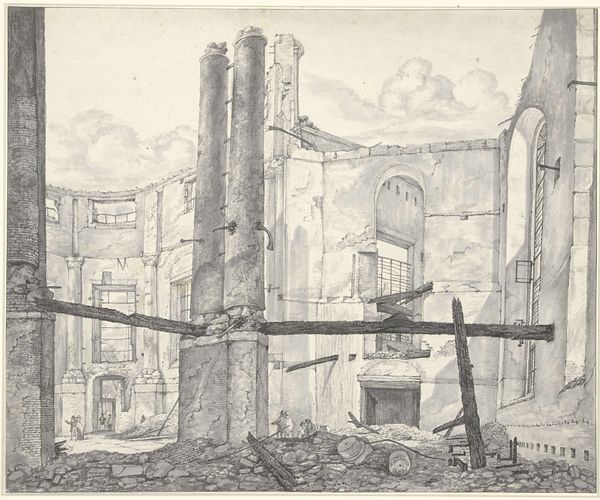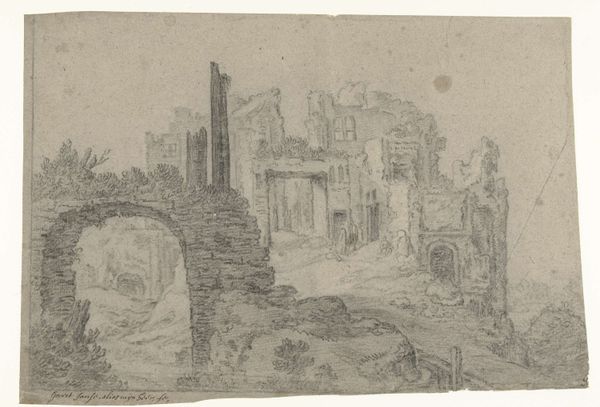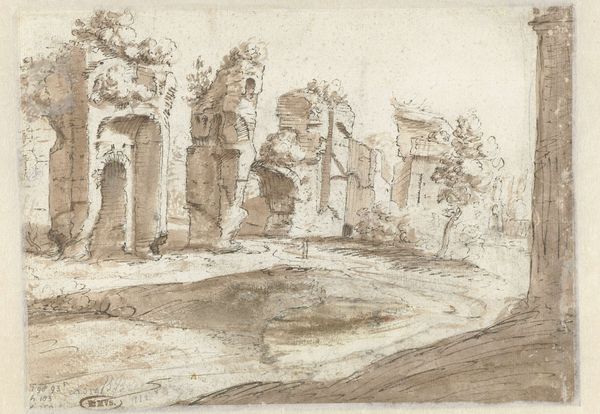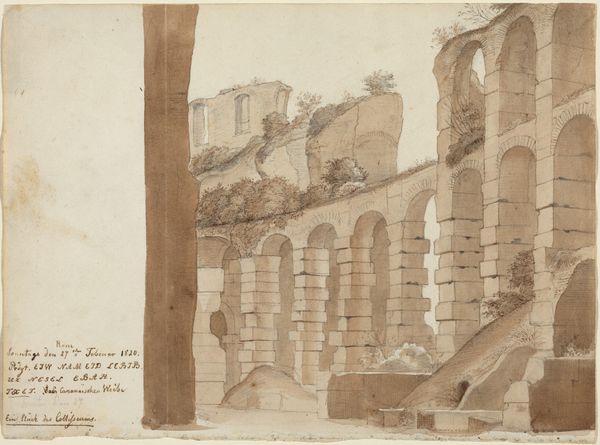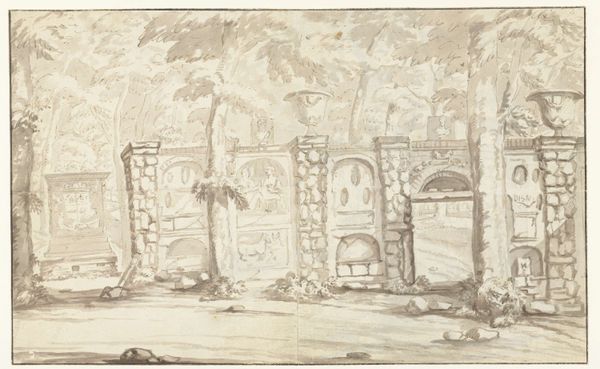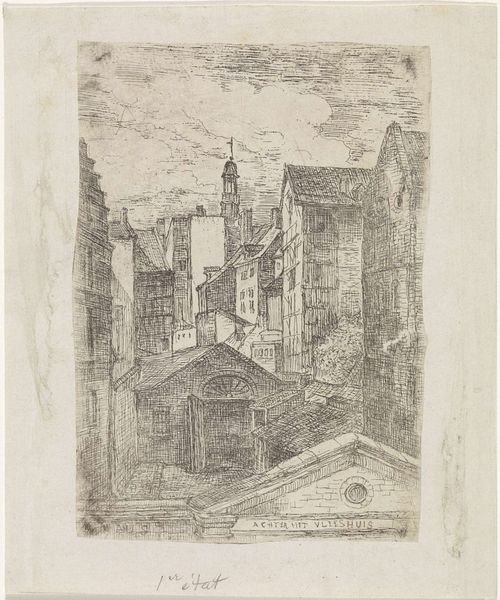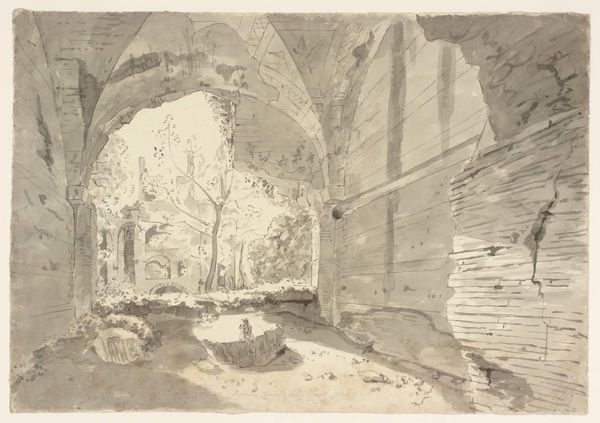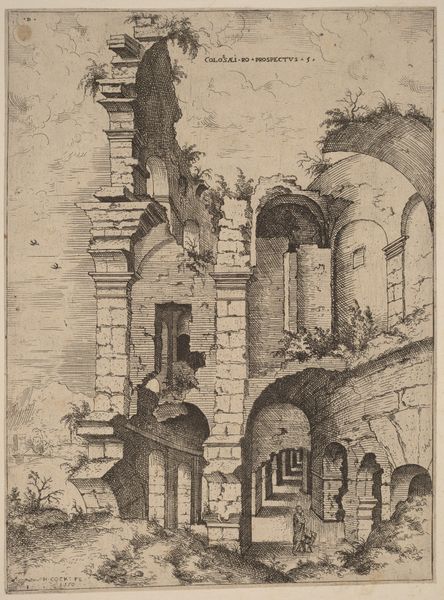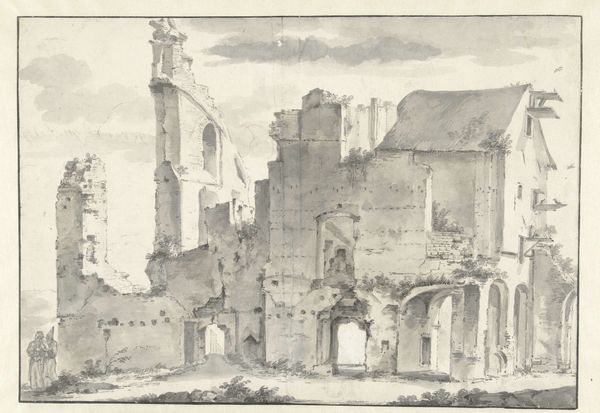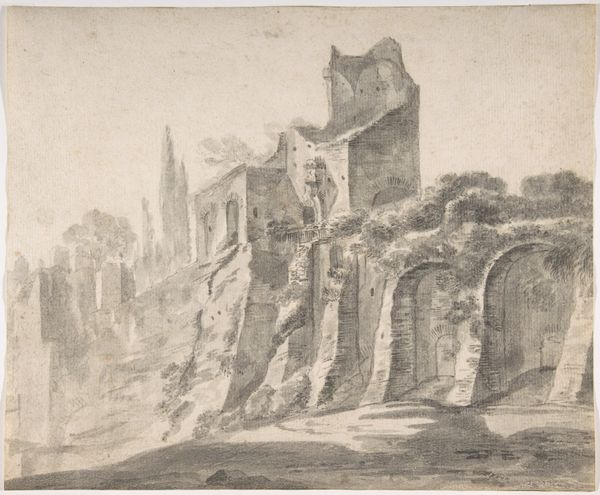
drawing, paper, ink
#
drawing
#
landscape
#
paper
#
form
#
romanesque
#
ink
#
line
#
history-painting
#
realism
Dimensions: height 200 mm, width 270 mm
Copyright: Rijks Museum: Open Domain
Editor: Here we have Moses ter Borch's "Paadje door het Colosseum, Rome," made with ink on paper, sometime between 1592 and 1675. I'm struck by the ruined state he depicts. What do you see in this drawing? Curator: I see a powerful statement about the lifespan of materials and the cyclical nature of labor and consumption. Think about it: the Colosseum, initially a product of intense labor and material extraction, is here rendered as decaying matter. Editor: So you are drawn to how materials age and change? Curator: Precisely. Ter Borch isn’t just capturing a historical landmark; he’s highlighting the temporality inherent in material culture. This drawing also serves as a document of labor and social stratification. Roman society, built on the backs of enslaved labor, is now represented by crumbling infrastructure. Consider the paper itself – a product of its own specific industrial processes – and how Ter Borch’s application of ink interacts with its texture to create this image of ruin. Editor: It's interesting to consider paper and ink as products themselves, embodying social and industrial history. Are you suggesting that Ter Borch intended to make such a statement? Curator: Perhaps not consciously, but by meticulously depicting the decaying Colosseum with these particular materials, the drawing becomes a potent symbol of the interconnectedness between material production, labor, and the inevitable decline that awaits all constructions. Where do you think viewers positioned in 17th century Holland may fall within this paradigm of material usage? Editor: That does shift my perspective quite a bit. I'm now seeing the drawing as more than just a historical depiction of Roman architecture. Curator: Exactly! It invites us to reflect on the systems of labor and material transformation that underpin any society, including our own. Editor: Well, thanks. This has helped me look beyond just the subject matter and consider the broader material and historical context. Curator: My pleasure. Considering materiality opens a whole new dimension for understanding art, doesn't it?
Comments
No comments
Be the first to comment and join the conversation on the ultimate creative platform.


